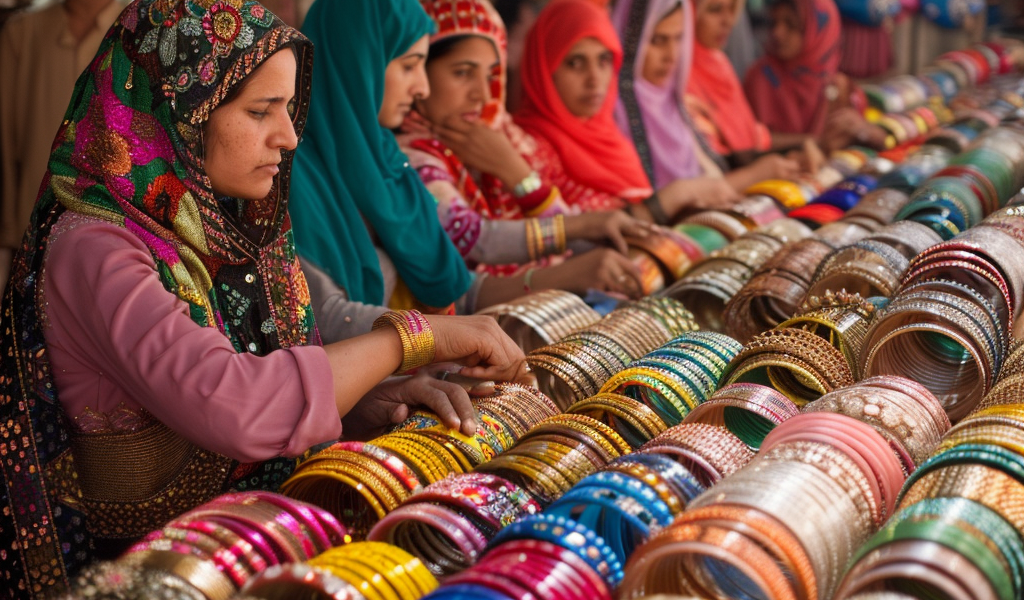As Eid al-Fitr approaches, the vibrant markets in Pakistan are adorned with a glittering array of colorful bangles, which are an essential part of the traditional outfits worn by women during the celebrations. These intricately decorated bangles are more than just fashion accessories; they are a symbol of cultural heritage and craftsmanship.
The process of making these delicate bangles involves the skilled hands of numerous artisans, from the sweltering factories to the homes of designers who meticulously adorn them with beads, stitching, and embroidery. According to 42-year-old Talat Zahid, a designer, wearing an outfit without bangles feels incomplete, regardless of the prevailing fashion trends. She emphasized the significance of bangles in completing the overall look.
With the onset of Eid al-Fitr festivities, market stalls are bustling with women inspecting and haggling for the perfect bangles. The prices of these bangles can range from 150 rupees ($0.5) to 1,000 rupees ($3.6), depending on the intricacy of the designs and the materials used, such as stones and silk.
Hyderabad, known for its delicate churi or glass bangles, houses furnaces that produce up to 100 pieces an hour from molten glass wire shaped around an iron rod. However, the labor-intensive nature of this work exposes the workers to oppressive temperatures in unregulated factories, often plagued by frequent power cuts. This challenging environment, coupled with the soaring gas prices due to reduced subsidies, has led to the closure of many factories or a reduction in operating hours.
The impact of the increased gas prices and taxes has been particularly felt by the industry, as highlighted by 50-year-old factory owner Muhammad Nafees. He expressed concerns about the shrinking of the industry due to the rapid changes in government policies.
Since the partition of British-ruled India in 1947, the bangle industry has been a significant source of livelihood for hundreds of thousands of people in Hyderabad. However, the recent economic challenges have posed threats to the sustainability of this traditional craft.
Despite the hardships faced by the bangle industry, the cultural and aesthetic significance of these intricately crafted accessories continues to hold a special place in the hearts of Pakistani women, adding a touch of tradition and elegance to their Eid al-Fitr celebrations.





